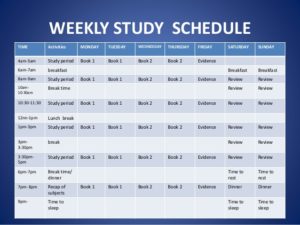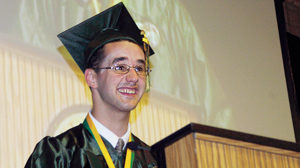The number of students with autism that are enrolling in college is comparatively low. Approximately 0.7 percent to 1.9 percent of the college population consists of autistic students with an incompletion rate of 80%. The question is, why is that and what can high school teachers do to prepare their students for upper-level education?
“Understanding Autism: A Guide for Secondary School Teachers” explains how teachers can better educate autistic students and handle certain behavior. It is important to note that autism is different in every individual who has ASD. There are many aspects in the classroom that autistic students can be sensitive to including, flickering lights, the hum of a computer monitor, and the sound of chalk on a chalkboard. Secondary classroom settings can be more challenging because of how complex the environment is in both social and academic areas. In addition, autistic students have trouble learning the different rules in class and following directions. Since students with ASD have unique learning styles, teachers can incorporate their strengths when they are planning for instruction. For example, autistic individuals learn better when they can see information as opposed to being lectured. They also need explicit instruction, consistency, and predictability in classes.
In an article published on “Autism Speaks,” Dr. Veronica Fleury addresses some of the reforms that can help autistic students be more successful in school. She states that implementing a routine, writing out schedules, exposing students to the class material beforehand, and developing mnemonic devices are ways that teachers can make learning more effective for students with ASD.
The guide also addresses several support strategies for teachers to enact which include priming, academic modifications, home base, visual supports, and reinforcement. Priming provides exposure of course material to the student before class. This can reduce stress and make the student feel more prepared for instruction. Academic modifications are adaptations made for the student to meet their needs. Home base is a designated area where students are able to regain control when they are stressed or frustrated. As stated before, visual supports help students retain information better and alleviate anxiety. Reinforcement involves rewarding students for exhibiting encouraged and positive behavior. This increases the likelihood that the student will engage in the behavior again. It is important to be explicit when reinforcing behavior so that the student knows exactly what is being reinforced.
Three stages that occur when a student with ASD is overwhelmed is also outlined in the guide. The first stage is called ‘rumbling’. The student exhibits minor behaviors such as bouncing their leg. It is important for the teacher to be aware of these signs and act appropriately before the situation escalates. Teachers can do something to distract  the student such as having them do a specific task outside of the classroom or sending them to home base. The next stage is called ‘rage’. The student’s emotions heighten and the behavior that follows can be dangerous to themselves and others around them. As with the first stage, students can be sent to home base to help them relax. The last stage, ‘recovery’, is when the behavior has stopped, but the student is not ready to continue learning. The teacher can assign a simple task that involves their specific strength and interest.
the student such as having them do a specific task outside of the classroom or sending them to home base. The next stage is called ‘rage’. The student’s emotions heighten and the behavior that follows can be dangerous to themselves and others around them. As with the first stage, students can be sent to home base to help them relax. The last stage, ‘recovery’, is when the behavior has stopped, but the student is not ready to continue learning. The teacher can assign a simple task that involves their specific strength and interest.
Teachers should also be aware of the different support systems offered to help them respond to autistic students. This includes the Individualized Education Program (IEP), special education personnel, and paraprofessionals. By implementing these strategies, autistic students have a better chance of succeeding in high school, higher education, and the workforce.

I think that this is an incredibly relevant topic and that you did a great job outlining possible solutions. As neurotypical students, we often take for granted the fact that our classrooms and our schools are geared towards us and conducive to our way of learning. We sometimes don’t realize that autistic students, who may be far smarter than we are, have to work much harder. Because the autistic students are already working really hard, I believe that the teachers have a responsibility to at least meet them half-way and implement some of the strategies that you have mentioned in this article. I was especially interested by the three stages that occur when an autistic student is overwhelmed. I had never heard about this before and I think it is important that teachers are educated on these signs so that they can tell when their students are struggling and are able to intervene to try and relieve some of that anxiety.